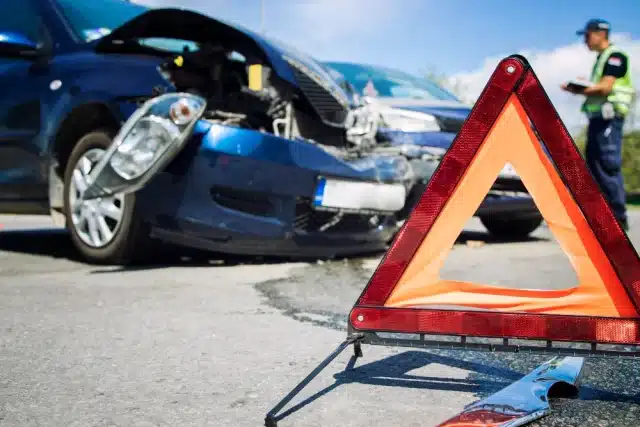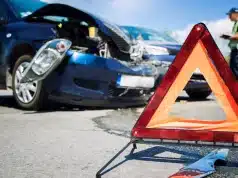Car accidents are a leading cause of injury and property damage, affecting millions of individuals every year. In the aftermath of a collision, the topic of liability often surfaces, raising questions and uncertainties. Many drivers hold misconceptions about who is responsible and what they can claim. Understanding these myths is crucial for protecting your rights and making informed decisions. In this blog, we will debunk common myths surrounding car accident liabilities and explore how psychological factors influence these perceptions.
Overview of Car Accident Liabilities
According to accidentlawyerelite.com, car accident liability refers to the legal responsibility one party has for damages resulting from a collision. This responsibility can vary based on the circumstances of the accident, such as traffic laws and the actions of the involved parties. For many drivers, knowing who is liable after an accident can greatly impact the financial and emotional outcomes.
Understanding liability is essential for anyone on the road. It not only helps determine compensation for damages but also clarifies the responsibilities that each driver holds. When individuals grasp the concept of liability, they can navigate the complexities of insurance claims and legal proceedings more effectively.
Common Myths About Car Accident Liabilities
One prevalent myth is that if you are involved in an accident, the other driver is always at fault. While it’s easy to assume blame lies solely with one party, many accidents result from shared fault. In reality, factors such as weather conditions, road signs, and driver behavior can all contribute to the circumstances of an accident, making liability a nuanced issue.
Another common misconception is that insurance will cover all expenses after an accident. While insurance can help with medical bills and property damage, it often has limits and exclusions. Drivers may be surprised to learn that certain expenses, like lost wages or pain and suffering, may not be fully compensated, leaving them vulnerable to financial strain.
Psychological Factors Influencing Perceptions of Liability
Cognitive biases significantly impact how people perceive liability in car accidents. For instance, confirmation bias leads individuals to seek information that supports their beliefs while ignoring contradictory evidence. This can result in skewed interpretations of fault, where drivers may insist they were not at fault despite evidence to the contrary.
Emotional responses also play a critical role in shaping perceptions of liability. After an accident, feelings of fear, anger, or confusion can cloud judgment. When emotions run high, individuals might misinterpret the situation or react defensively, reinforcing incorrect beliefs about liability and accountability.
Moreover, the impact of social influences cannot be overlooked. Friends, family, and media portrayals can shape perceptions of fault and liability, often reinforcing stereotypes or misconceptions. For example, a driver may internalize the belief that aggressive driving leads to higher liability, affecting their behavior and decisions after an accident. This social pressure can skew an individual’s understanding of their own culpability, leading to increased anxiety and reluctance to accept responsibility. Ultimately, recognizing these psychological influences can help individuals navigate the complexities of liability more effectively and promote healthier decision-making processes.
Debunking Myths with Evidence
According to bbjlawyers.com, to counter these myths, it’s important to rely on statistical data and expert opinions. For example, studies show that in many accidents, liability is shared between drivers. A report from the National Highway Traffic Safety Administration indicates that nearly 60% of accidents involve more than one party contributing to the crash. This data underscores the importance of understanding that fault is not always black and white.
Legal experts often highlight the concept of comparative negligence, which allows individuals to claim damages even if they are partially at fault. This principle enables courts to assign a percentage of fault to each party, making it possible for injured individuals to recover compensation. By shedding light on these realities, we can dispel the myths surrounding car accident liability and empower drivers to make informed decisions.
Practical Advice for Drivers
Given these insights, it’s crucial for drivers to understand their insurance policies thoroughly. Many policies contain nuances that can significantly affect claims. By familiarizing themselves with coverage limits, exclusions, and the process for filing claims, drivers can avoid unpleasant surprises following an accident.
Documenting the scene of an accident is also vital. Gathering evidence, such as photographs, witness statements, and police reports, can support claims and clarify liability. Additionally, consulting legal professionals after an accident can provide valuable guidance, ensuring that individuals understand their rights and the potential for compensation.
Furthermore, drivers should prioritize defensive driving techniques. Staying aware of road conditions, maintaining a safe following distance, and avoiding distractions can significantly reduce the likelihood of accidents. Engaging in proactive behaviors not only enhances safety but also contributes to a more favorable perception of liability in the event of an accident. Being prepared and informed equips drivers to respond calmly and effectively, reducing stress and potential misunderstandings about liability when incidents occur. Ultimately, adopting these practices fosters a culture of responsibility and safety on the roads.
Conclusion
In conclusion, debunking myths about car accident liabilities is essential for every driver. By understanding the realities of liability and the psychological factors at play, individuals can make more informed decisions on the road. It’s crucial to recognize that liability can be complex and shared, and that insurance may not cover all expenses. Educating oneself about these aspects not only helps protect rights but also fosters a safer driving environment for everyone. Stay informed, be prepared, and remember that knowledge is your best ally in navigating the challenges of car accident liabilities.

Speaks from heart, always too passionate and driven by emotions. Spins the words with kindness & sharpness, intriguing your ever-inscrutable minds.




